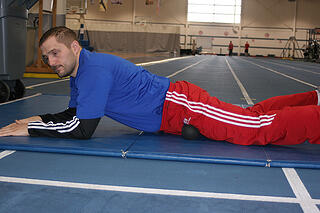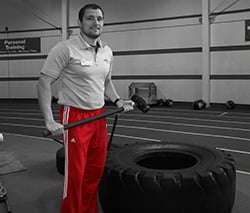One thing I have really begun to pay special attention to within my exercise program lately is correcting my postural deficiencies. About a month ago as I was staring in the mirror (in awe of my handsome looks) waiting to begin my next set of shoulder presses, I noticed that both of my shoulders were comfortably rounded forward as I stood straight up. I made a conscious effort to pull them back in line with my ear, knee, and ankle (correct posture); however, this was very uncomfortable for me to maintain for a short period of time.
 It then dawned on me that if it was uncomfortable for me to maintain good posture for a few seconds, imagine the effect these deficiencies will eventually have on my muscularity, the efficiency of my resistance training in regard to compensation for the targeted muscles, as well as the greater postural deficiencies that naturally occur as we get into our later years.
It then dawned on me that if it was uncomfortable for me to maintain good posture for a few seconds, imagine the effect these deficiencies will eventually have on my muscularity, the efficiency of my resistance training in regard to compensation for the targeted muscles, as well as the greater postural deficiencies that naturally occur as we get into our later years.
Many people find themselves hunched over a keyboard or office desk for many hours throughout the day. This can have a huge effect on your posture over time. Hunchback, or rounded shoulders, occurs because we often do not have the muscular endurance in our upper back and shoulder muscles to resist and fight against gravity. When we allow our shoulders to round forward (known as kyphosis), our anterior muscles (pectoralis major and minor) become tight due to always being in a shortened state while our posterior shoulder muscles (trapezius, rhomboids, and rotator cuff muscles) become lengthened and weak.
The best way to find out if you might have this problem is to have someone take a photo of you from the side in your natural, relaxed, standing position. If your ears, shoulder, knees, and ankles are not aligned with each other, you could have a moderate to severe case of kyphosis. No worries, however, as this is very common now, especially with the prevalent use of computers in the workplace and at home. Here are some quick solutions you can implement into your warmup to help your alignment.
Solution One: Maintain Correct Positioning When Sitting at the Computer
Maintain correct positioning (shoulder blades back, chest open wide) when sitting at a computer desk. This may seem obvious, but if it was as obvious as it seems, we wouldn’t be having this conversation in the first place. The more time you spend in this position, the quicker your body will adapt to being in proper alignment.
Also try to avoid excessive use of laptops. Laptops naturally put your body in a rounded-shoulder positioning because of how low the computer screen is when placed in the lap. Instead, try stacking the laptop on top of a box or a stack of books so that the upper edge of the monitor is just below eye level. This will help you maintain a natural, “unrounded,” or upright shoulder position because you no longer have to be hunched over looking down at the computer monitor.
Solution Two: Foam Rolling
Foam roll the thoracic spine to improve thoracic extension range of motion. Myofascial release (foam rolling) will help you regain full extension in your thoracic spine that might have been lost due to weak upper-back muscles and constant downward pull on the anterior pectoral and shoulder muscles.
Solution Three: Static Stretching
Statically stretch the pectoralis major and minor muscles to free up any tightness in the chest. Hold each stretch for about 30 seconds and repeat two to three times before your resistance or cardio training workout. This will help eliminate some pulling of the anterior shoulder muscles, which will make it easier for you to maintain proper postural alignment. Here’s a video of some static chest stretches you can try.
Solution Four: Upper Posterior Chain Muscle Exercises
Increase muscular strength and endurance of the posterior shoulder muscles by performing various upper posterior chain muscle exercises. By strengthening these muscles, maintaining proper alignment of the shoulders will become much more natural and manageable for an individual over long periods of time. When our posterior shoulder muscles lack strength, they have little chance of winning the fight against gravity when hunched over a computer keyboard.
One example of an exercise you can implement is the floor cobra. This will help with thoracic extension (as stated above) as well as retraction of the shoulder blades and opening of the chest muscles.
***
Remember, it took a great deal of time for your body to eventually adapt to the poor postural alignment, so you can expect the same with the correction process. Even though these tips will help you regain postural alignment, you cannot expect to see a great deal of change overnight. These tips have to be implemented into your daily life in order to see long-term changes.
Stay tuned for my next blog, where I will be covering another common postural problem: Anterior pelvic tilt.
This blog was written by Darius Felix, Health Fitness Instructor. To find out more about the NIFS bloggers, click here.


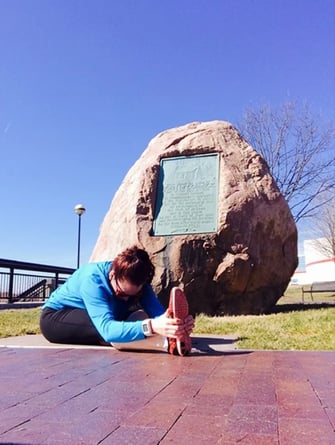 We know it is encouraged by fitness professionals, and included at the end of group exercise classes, but I want to ask you, personally: how many times after a workout do you actually take the time to cool down?
We know it is encouraged by fitness professionals, and included at the end of group exercise classes, but I want to ask you, personally: how many times after a workout do you actually take the time to cool down? 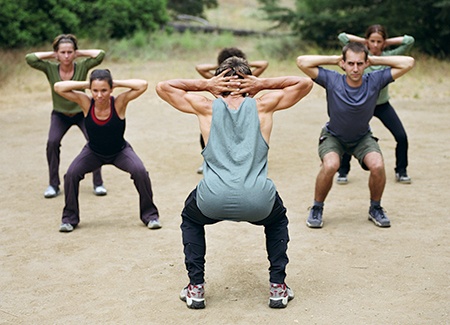

 Okay, so you may have been hearing the word “PiYo®” circulating these last few months within the world of group fitness. For those of you who feel like you do not completely know what it means or what the class entails, fear not. I guarantee you are not the only one with questions, and as a certified PiYo instructor, I would love to share a few reasons why I teach it, and the benefits that can come from practicing it.
Okay, so you may have been hearing the word “PiYo®” circulating these last few months within the world of group fitness. For those of you who feel like you do not completely know what it means or what the class entails, fear not. I guarantee you are not the only one with questions, and as a certified PiYo instructor, I would love to share a few reasons why I teach it, and the benefits that can come from practicing it. Surprisingly, for many of us (myself included), just using our own bodyweight for certain exercises can be challenging enough. From moves like triceps pushups, to lunges, to side planks, 140+ pounds begins to feel really heavy really quick! PiYo® takes many of these simple-to-learn yet challenging moves and combines them with aspects such as “time under tension” and dynamic pulses to keep the body moving the whole time.
Surprisingly, for many of us (myself included), just using our own bodyweight for certain exercises can be challenging enough. From moves like triceps pushups, to lunges, to side planks, 140+ pounds begins to feel really heavy really quick! PiYo® takes many of these simple-to-learn yet challenging moves and combines them with aspects such as “time under tension” and dynamic pulses to keep the body moving the whole time. 
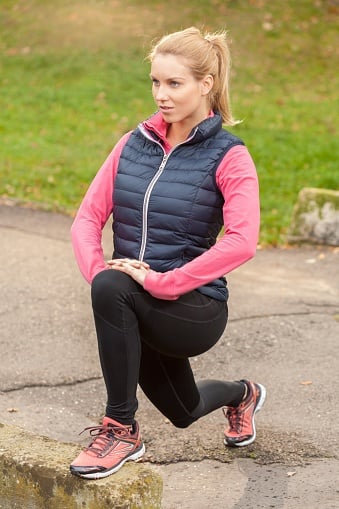 Have you ever gone into the gym and jumped right into your workout, only to notice that it took a good 20 minutes to get into it? Or how about heading out for a run without any form of warming up, and you really don’t start to feel into your rhythm until halfway through?
Have you ever gone into the gym and jumped right into your workout, only to notice that it took a good 20 minutes to get into it? Or how about heading out for a run without any form of warming up, and you really don’t start to feel into your rhythm until halfway through? 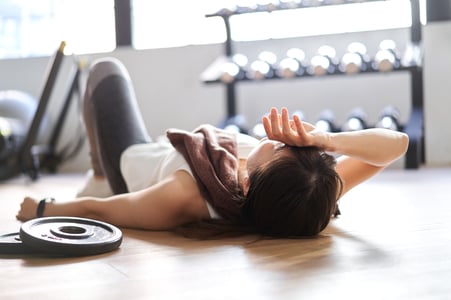 I think most of us can agree that a little muscle soreness after a fantastic workout is a fun way to remember that things are changing and that we are getting stronger. I think we can also agree (and most have experienced it) that there is a certain degree of soreness that kind of feels like “everything hurts so badly you can’t stand up or lift your arms,” which isn’t quite as motivating. Along with this you may feel irritable, fatigued, and really hungry. Sounds fun, right?
I think most of us can agree that a little muscle soreness after a fantastic workout is a fun way to remember that things are changing and that we are getting stronger. I think we can also agree (and most have experienced it) that there is a certain degree of soreness that kind of feels like “everything hurts so badly you can’t stand up or lift your arms,” which isn’t quite as motivating. Along with this you may feel irritable, fatigued, and really hungry. Sounds fun, right?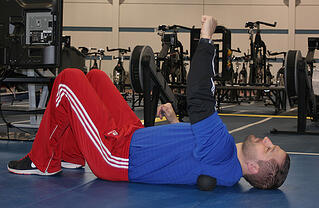
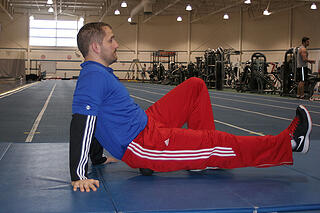 you are targeting).
you are targeting).